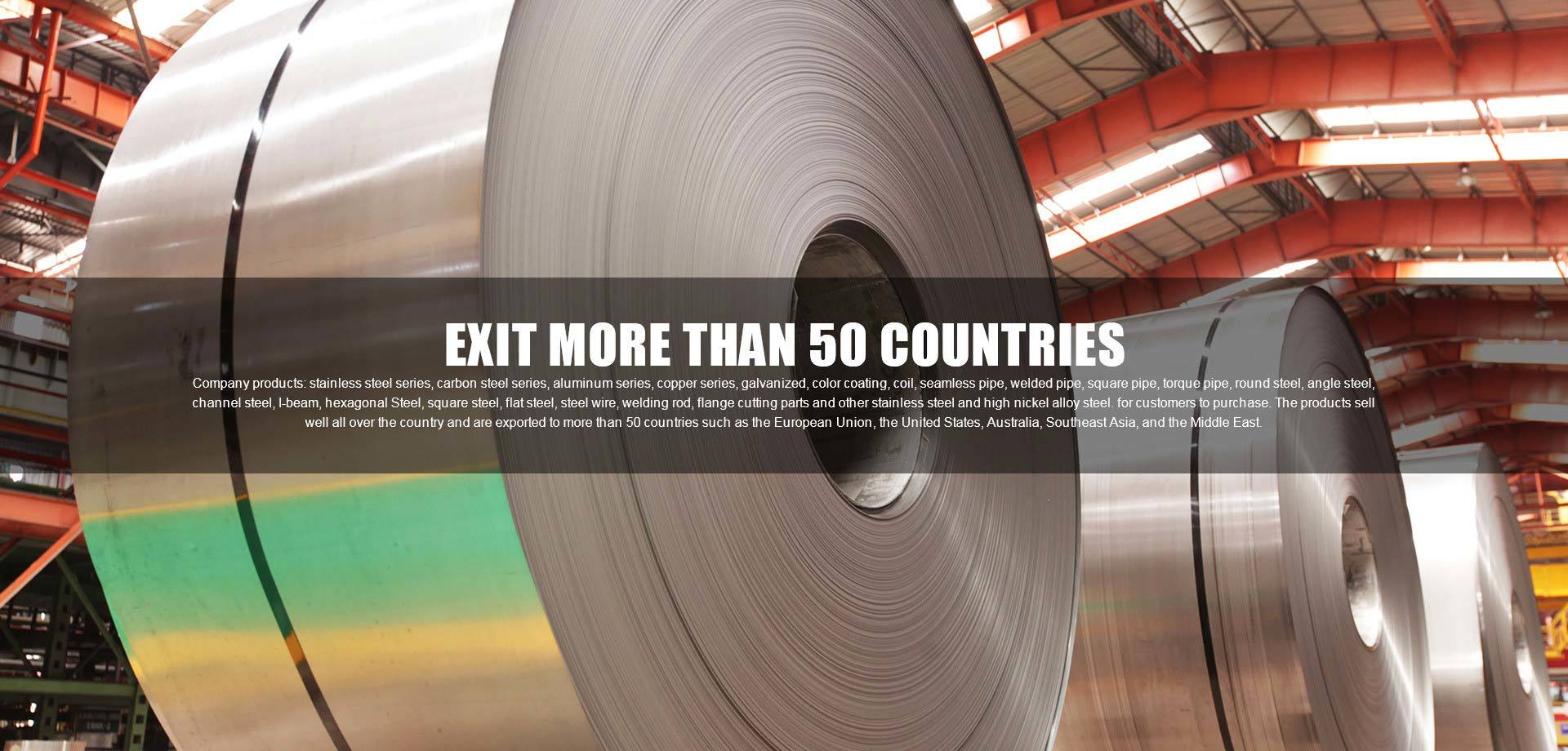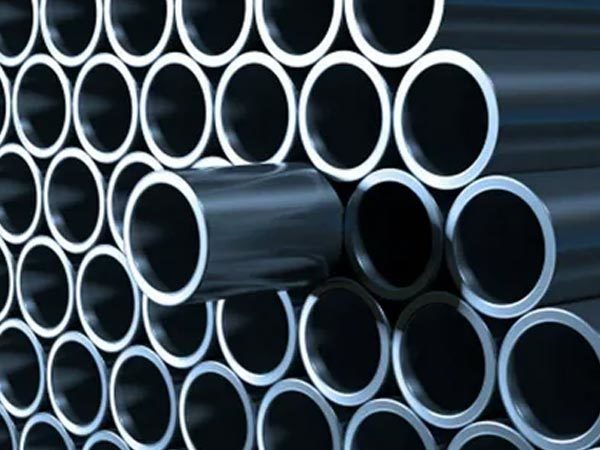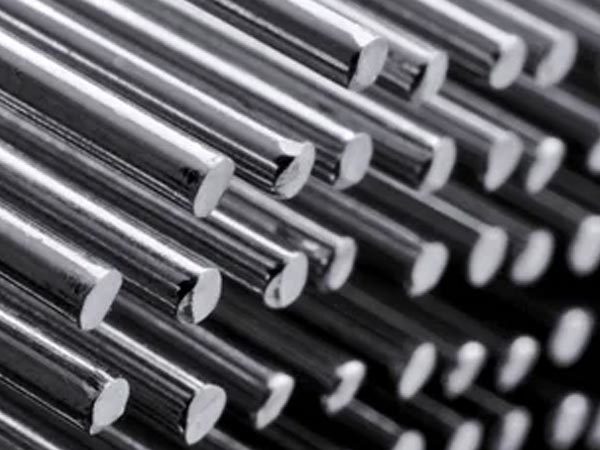PRODUCT CENTER
Company products: stainless steel series, carbon steel series, aluminum series, copper series, galvanized, color coating, coil, seamless pipe, welded pipe, square pipe, torque pipe, round steel, angle steel, channel steel, I-beam, hexagonal Steel, square steel, flat steel, steel wire, welding rod, flange cutting parts and other stainless steel and high nickel alloy steel.
A36/Q235/S235JR Carbon Steel Coil
A36 is a low-carbon steel containing trace amounts of manganese, phosphorus, sulfur, silicon and other elements such as copper. A36 has good weldability and high yield strength, and is the structural steel plate specified by the engineer. ASTM A36 steel plate is often manufactured into a variety of structural steel parts. This grade is used for welded, bolted or riveted construction of bridges and buildings, as well as for general structural purposes. Due to its yield point, A36 carbon plate can be used to design lighter-weight structures and equipment, and provide good weldability. Construction, energy, heavy equipment, transportation, infrastructure and mining are the industries where A36 panels are commonly used.
A36/Q235/S235JR Carbon Steel Plate
A36 is a low-carbon steel containing trace amounts of manganese, phosphorus, sulfur, silicon and other elements such as copper. A36 has good weldability and high yield strength, and is the structural steel plate specified by the engineer. ASTM A36 steel plate is often manufactured into a variety of structural steel parts. This grade is used for welded, bolted or riveted construction of bridges and buildings, as well as for general structural purposes. Due to its low yield point, A36 carbon plate can be used to design lighter weight structures and equipment, and provide good weldability. Construction, energy, heavy equipment, transportation, infrastructure and mining are the industries where A36 panels are commonly used.
A53 Seamless & Welded Carbon Steel Pipe
ASTM A53 is a carbon steel alloy that can be used as structural steel or for low pressure piping. ASTM A53 (ASME SA53) carbon steel pipe is a specification covering seamless, welded black and hot-dip galvanized steel pipe from NPS 1/8 "to NPS 26. A53 is suitable for pressure and mechanical applications, as well as for general use in steam, water, gas and air lines.
ASTM A106 is suitable for seamless carbon steel pipe for high temperature environment. ASTM A106 pipe is manufactured according to grade A, B and C. A106-A is equivalent to the domestic 10# steel material, A106-B is equivalent to the domestic 20# material, is a relatively common use of a steel pipe material at home and abroad. A106 seamless steel pipe is mainly used in construction, mechanical processing, electrical, petrochemical and other industries.
The specifications and models of U-shaped steel sheet piles are rich, and the length can be specially customized according to the requirements of customers, which brings great convenience to the construction and reduces the cost at the same time.
Z-shaped sheet piles are called Zs because the single piles are shaped roughly like a horizontally stretched Z. The interlocks are located as far away from the neutral axis as possible to ensure good shear transmission and increase the strength-to-weight ratio. Z piles are the most common type of sheet pile in North America and can be used in a wide variety of applications.
CHS Circular Steel Hollow Section
As with square HSS, round steel HSS is ideal for creating uniform geometries. Round tubing is well-suited to constructing columns and features a high resistance to torsion.
Rectangular HSS is often used within welded steel frames where loading occurs from multiple directions. The flat shape makes rectangular HSS ideal for construction. It is often used to create a pleasing aesthetic effect.

BAIXINXIN METAL PRODUCTS
The company insists on focusing on the market externally, focusing on management internally, taking the road of quality and benefit-oriented development, and has achieved good economic and social benefits.
Product stock
Export country
FACTORY WORKSHOP

Factory Workshop

Factory Workshop

Factory Workshop
NEWS CENTER
Our company has thousands of tons of standing inventory, sufficient supply and complete specifications. It has formed an annual inventory turnover of more than 9,000 tons and more than 800 specifications.
The connection methods of steel pipes are
The connection methods of steel pipes mainly include threaded connection, flange connection, welded connection, clamp connection and butt welding connection.
Density of steel rod
The density of steel rods typically ranges from 7.85g/cm³ to 8.3g/cm³, depending on the type and composition of the steel.
10-28
2024
The correct way to install steel coils
The correct way to load steel coils depends on their size, weight and how they are transported or stored.
10-13
2024
Overlap length of steel bars
The specification requirements for the length of the steel bar binding overlap shall not be less than 300mm. The minimum overlap length shall meet the specification requirements. According to the calculation of the overlap ratio, the vertical steel bar binding overlap position of the shear wall shall be turned up after the floor concrete of this floor is poured. Set steel joints about 1m apart. According to national standards, the overlap length of steel bars should be calculated according to the formula L=1.2d (1+λ)/α, where L is the overlap length, d is the diameter of the steel bar, λ is the length ratio of the stressed members, and α is the steel bar The ratio of tensile strength to the axial compressive strength of concrete.
09-13
2024
Steel pipe material
Steel pipes can also be divided into seamless steel pipes and welded steel pipes according to the production process. Seamless steel pipes are divided into hot-rolled and cold-rolled (drawn). Welded steel pipes are divided into straight seam welded steel pipes and spiral seam welded steel pipes.
08-10
2024
The difference between steel coils and steel strips
The difference between steel coils and steel strips mainly lies in their size and use. Steel coils usually refer to larger width coils, while steel strips refer to narrower coils and are used in specific processing areas.





